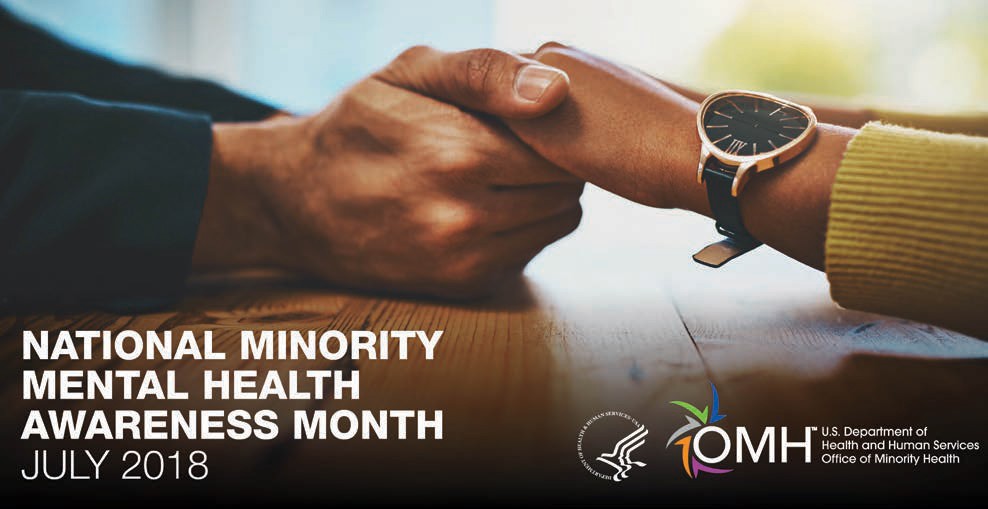Teens at Risk
Throughout middle school and high school, Emily’s friends gossiped about her, excluded her, and constantly told her she wasn’t like them. Their bullying got so bad that Emily began thinking about ending her life. Luckily, Emily sought treatment for depression and found a refuge online, where she made friends who understood what she was going through.
Emily was at high risk for experiencing suicidal thoughts. Social isolation and bullying are two common risk factors for teen suicide. Understanding risk factors and at-risk groups can help you understand yourself better and help you identify peers who need help.
Many teens go through their lives dealing with their responsibilities in healthy ways. There are those, however, who will find themselves in risky situations and have difficulties coping with them. Risk factors are circumstances that may predispose a person to consider or attempt suicide. (Remember that not all risk factors lead to suicide.)
Some of the main risk factors include:
• alcohol and dRug abuse
• Gambling
• School and/or personal crisis
• Setting high self-standards
• Legal problems
• Social isolation
• Bullying
• unplanned pregnancy
• Previous sucide attempt
• Depression
• Media influence and cluster suicides (copycat suicides)
• New situations like beginning college
• Chemical imbalances
• Early traumas
• Sexual identity issues
Alcohol and Drug Abuse
Drugs and alcohol are used by many teens to attempt to reduce the pain they are feeling from stress and feelings of helplessness or hopelessness. Teens can start feeling signs of depression as early as age twelve or thirteen. If they do not seek professional help, depressed teens may seek out other methods to relieve themselves of their symptoms. They may turn to drugs and alcohol to help them deal with their pain. Teens who engage in high-risk behaviors involving sex and alcohol and drugs have significantly higher odds of suicidal thoughts and suicide attempts.
When a person first starts to drink alcohol, it can elevate their mood, but it is in fact a depressant drug. Having two to three glasses of alcohol can impair one’s vision, speech, coordination, and sense of balance, and can cause loss of self-control. If a teen already suffers from depression, alcohol can increase his or her feelings. If a teen is feeling suicidal, these feelings may become enhanced after drinking alcohol. The relationship between alcoholism and suicide appears to be stronger among males than females.
Research shows that among young people who took their own lives, the drugs most commonly abused after alcohol were marijuana, cocaine, amphetamines, and combinations of the three. Also, young people who have not been known to have suicidal feelings before may become vulnerable to depression and suicidal emotions under the influence of drugs and alcohol, particularly after prolonged use.
Studies of middle schoolers and high schoolers show that teens who abstain from drugs and alcohol have the lowest levels of depression, suicidal thoughts, and suicide attempts. Teens who report heavy use of illegal drugs like marijuana had the highest level. Research also shows that girls compared to boys were less likely to pursue high-risk behaviors, but when they did, they were more vulnerable to depression, suicidal thoughts, and suicide attempts.
High-risk behaviors can contribute to suicidal behavior in many teenagers. Young people who are depressed could also be more drawn to drugs as a form of self-medication and escape. A 2012 study found that about one-fourth of all suicide victims in the United States had consumed alcohol prior to taking their lives. Experts believe that teen suicide victims might be even more likely to be intoxicated at time of death.
As a teen, Kevin Breel had a life that looked perfect from the outside. He was the captain of the basketball team, he earned great grades, and he had a lot to look forward to. Breel also had a secret. He was grappling with depression, and he was thinking about taking his own life. In fact, Breel says that he considered suicide every day of his life.
Today, Breel has made it his mission to tackle the stigma surrounding depression. In a viral TED Talk, Breel told the world his secret. Being open and honest changed his life for the better. He has a brand-new perspective about what life with depression can look like, and he says that being open about his problems is the key. In Breel’s words:
Unfortunately, we live in a world where if you break your arm, everyone runs over to sign your cast, but if you tell people you’re depressed, everyone runs the other way. That’s the stigma. We are so, so, so accepting of any body part breaking down other than our brains. And that’s ignorance. That’s pure ignorance, and that ignorance has created a world that doesn’t understand depression, that doesn’t understand mental health.
Through his activism and honesty, Breel works toward making others feel less alone. “Depression is okay,” he says. “If you’re going through it, know that you’re okay. And know that you’re sick, you’re not weak, and it’s an issue, not an identity.”
Gamblers have the highest suicide rate of any addicted group. Some teens see gambling as a way to make easy money. What they cannot envision is the cycle of losing and going into debt. Many teens who constantly gamble on the internet, sometimes winning and many times losing, are isolated. They start craving the thrill of the win and of course get despondent, or let down, at the loss. Some teens might lose large sums of money, causing them to feel overwhelmed, hopeless, and ashamed. The simplest way to avoid a gambling addiction is to never start. However, there are resources for teens who find themselves developing a gambling problem. If you or a peer have a gambling addiction, reach out to a trusted adult, like a school counselor. They can help you find a therapist, treatment program, or support group.
When a celebrity dies by suicide, statistics show a spike in the number of suicides after the news story breaks. This phenomenon is known as a cluster, or copycat, suicide. Cluster suicides can also occur in communities, families, and schools. Researchers say that the “suicidal contagion” behind cluster suicides affects teens the most. Of course, suicide is not actually contagious. Just because there have been high-profile suicides or suicides that have affected you personally does not mean that more people around you are going to die by suicide. That said, knowing that cluster suicides can occur helps you to be on the lookout for peers who might be at a higher risk.
School and Personal Problems
School is often stressful for teens. There is the stress of passing tests, completing day-to-day homework, getting into a college or university, being popular, and basically fitting in. There are also the physical, sexual, and emotional changes that occur through adolescence. This is a time of rapid change. It is also a time for moods to be somewhat erratic. Most of this is quite normal. It is when a teen is feeling out of control and in crisis that the need for help must be addressed.
Some school problems can be attributed to students having difficulties with academics, perhaps because of learning disabilities. At times, school problems can be a warning sign of deeper issues. They may be a sign that a teen is feeling depressed.

The stress of tests, homework, and grades can take a toll on students.
Adolescence is also the time when young men and women start getting romantically involved. With relationships come breakups. Teens of both genders have attempted suicide because they could not cope with their romantic breakups, though historically this has been more prevalent among females. Young women are also more prone to anorexia nervosa, an eating disorder in which people restrict their food intake. In some cases, anorexia leads to death, a slow suicide.
Many teens feel there is an “in crowd” and that they are not part of it. If a teen has trouble making friends, this can be cause for concern. It’s fairly easy to look around and identify peers who are loners. Many times, teens do not empathize or put themselves in the other person’s shoes. Social isolation can be extremely painful. Reaching out to others can literally save lives.
Teens’ lives are busy and complicated. Juggling family, school, friendships, and relationships can be difficult.
On the other hand, some students who take their own lives seem to have it all. Setting high standards and not achieving them, as well as family pressures of setting overly high expectations to excel, can also be problems. These are anxious, insecure teens who have a desperate desire to be liked, to fit in, and to do well. Their expectations are so high that they demand too much of themselves and are condemned to constant disappointment.
Being a teenager is not an easy experience. There are times when you are feeling up and times when you are feeling down. It is when the down times and the negative feelings start to take over that the need to get help and support is crucial.
HIGH-RISK GROUPS
Suicidal thoughts can affect anyone. Yet there are a number of high-risk groups that are vulnerable and show more incidence of depression and suicidal thoughts than other groups. Some of these groups are Native American teens; Indigenous Canadian teens; African American teens; Hispanic teens; and gay, bisexual, or transgender teens.
In 2015, 5,486 American youths died by suicide. Of those young people, 3,672 were white, 807 were Hispanic, 574 were African American, 265 were Asian, and 150 were Native American. These totals don’t tell the full story, though. Many of these numbers indicate large increases in suicide cases for a particular ethnic group over time. Furthermore, total numbers fail to show the percentage of youths of a given ethnicity who attempt suicide or take their own life. Studies often discuss the number of deaths or attempts per one hundred thousand people of a given population. This percentage is also known as the suicide rate.
Native Americans
Native Americans have the second-highest suicide rate of any ethnicity, after white people. According to the Suicide Prevention Resource Center, “Among American Indians and Alaska Natives, suicide rates peak during adolescence and young adulthood, then decline.” The center notes that this is “a very different pattern than the overall age pattern [for suicide] in the United States.” Typically, the risk for suicide peaks at middle age.
Depression and suicide are huge problems among Native teens. They have to live in a world where racism is on the rise. When teens feel there is nowhere to go, some turn to alcohol abuse and drugs to deal with their depression. In a 2018 survey, one in four Native American middle schoolers surveyed said they had been intoxicated. Drug and alcohol abuse also affect the Indigenous population in Canada. In 2017, researchers found that among Indigenous youth who were drug users when they died, the third- leading cause of death was suicide.
Native Americans and Indigenous Canadians have specific risk factors, such as:
• Poverty
• Rapid culture change and/or cultural discontinuity (their life as they once knew it is rapidly disappearing)
• Forced assimilation (being absorbed by larger society without a choice)
• Forced relocation (being forced off their native lands)
• School experiences that exposed them to violence and abuse at a young age
• Copycat suicidal behaviors due to the close ties and identification among youth in small communities
There is a lot of hope, though. Culturally sensitive support groups, educational programs, and treatment facilities are important means of helping Native teens help themselves and their communities. In 2008, one such program was established by the Northwest Arctic Borough School District in Alaska. In the Youth Leaders Program, peer mentors help their classmates work through suicidal thoughts. More than ten years later, the program continues to save lives.
BLACK AND HISPANIC TEENS
Though the risk of suicide among young people is still highest with white males, suicide rates have increased for black and Hispanic teens. Additionally, the suicide rate for African Americans ages five through twelve is about double the rate of their white peers.
The CDC’s 2015 Youth Risk Behavior Survey shows that Hispanic teens have the highest rate of suicide attempts. Hispanic females in particular report high rates of attempts. About 15 percent of
Hispanic females surveyed in 2015 said they had made a suicide attempt in the past year. These numbers are staggering compared to the 6.8 percent of white teens who attempted to take their own lives within the twelve months prior to the survey.
Black and Hispanic teens from lower socioeconomic backgrounds report that they had suicidal thoughts and said they had few adults in their lives with whom they could discuss their personal problems. Those who attempted suicide were more than twice as likely to report that they had no one to count on compared to a nonsuicidal group.

National Minority Mental Health Awareness Month is held every July to promote awareness and end stigma.
Increasingly, schools and communities are speaking up about the stigma that keeps people from seeking help. In 2008, the US House of Representatives announced that July would be National Minority Mental Health Awareness Month. The goal is to “improve access to mental health treatment and services and promote public awareness of mental illness.” With greater awareness and programs aimed at ending stigma, it is possible to reduce the risk of suicide for black and Hispanic teens.

Trevor Project staff and volunteers march in the Capital Pride Parade in Washington, DC.
Sexuality, Gender Identity, and Suicidal Thoughts
Gay, lesbian, and bisexual youth are three times more likely to attempt suicide than their heterosexual peers. Experts believe that each instance of bullying raises the chances that a gay, lesbian, or bisexual teen will hurt themselves by 2.5 times. And a 2016 study found that 30 percent of transgender youth had attempted suicide at least one time.
In 1998, Peggy Rajski, Randy Stone, and James Lecesne founded the Trevor Project, a foundation that aims to save the lives of LGBTQ youth through suicide prevention programs and resources. Through the TrevorLifeline (1-866-488-7386), TrevorChat (https://www.thetrevorproject.org/get-help-now), and TrevorText (text START to 678678), the Trevor Project provides crisis support to LGBTQ young people ages thirteen to twenty-four. Each year, the TrevorLifeline fields more than forty-five thousand calls. The Trevor Project is a powerful reminder that LGBTQ youth are not alone.
Mental health Issues can affect anyone. Fame, fortune, and opportunity don’t prevent or lessen the chances that someone will face depression or suicidal thoughts. Many celebrities have opened up about their experiences with mental health conditions. Their stories demonstrate that popularity and success can’t make someone immune from pain.
Stars like Cara Delevingne, Dwayne “The Rock” Johnson, Kendrick Lamar, and Lili Reinhart have spoken out about their depression. Drew Barrymore and Halle Berry have given interviews about suicide attempts. Many celebrities who speak up say that they do so to encourage fans to seek help when they need it.

Dwayne “The Rock” Johnson has talked openly about experiencing depression.
Some celebrities have used their battles with depression as inspiration for songs, books, and charitable work. Lady Gaga started the Born This Way Foundation to help teens through depression and other common mental health issues. Rapper Logic’s song “1 -800-273-8255” is titled for the National Suicide Prevention Lifeline. Author J. K. Rowling says that the Dementors in the Harry Potter books were based on her experiences with depression. Rowling has given many interviews about her depression. She has even encouraged fans, tweeting, “The world is full of wonderful things you haven’t seen yet. Don’t ever give up on the chance of seeing them.”

